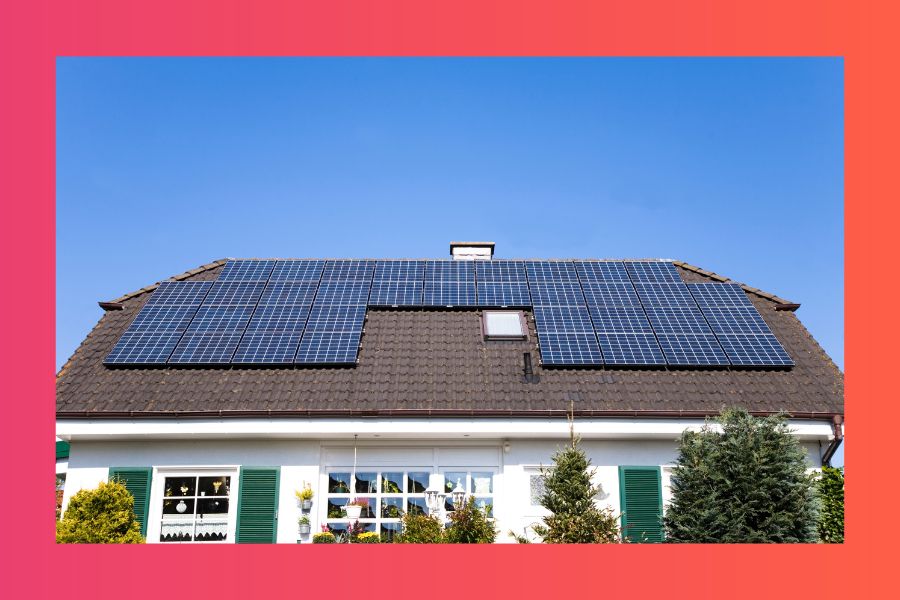Comparing Australia and Canada in Going Green
Of all the countries in the world which Australia is comparable with, arguably Canada is the closest. Yes, New Zealand is the nearby neighbour and...
3 min read
![]() Solar Trust Centre Team
:
Jun 7, 2023 9:00:00 AM
Solar Trust Centre Team
:
Jun 7, 2023 9:00:00 AM
-2.jpg)
It’s widely known that Australia is land which has keenly embraced solar power. In fact, it’s been held that Australia has had the highest uptake of rooftop solar power per-capita in the whole world!Just as this is an outstanding achievement, it’s also of course the case that there’s a number of layers to this uptake - for instance, the difference between rooftop solar and large-scale solar - and more widely, there are ultimately many different avenues that jurisdictions can look to travel in seeking to go green. So, which locales are among the Australian states and territories that have made some particularly notable progress in key areas when it comes to going green?
In a country that is a leader in solar power, South Australia can be proud to be a leading jurisdiction in so many ways among a leading country! While it’s true there have been some challenges which have arisen as a result of the speed of South Australia’s growth - with the issue of avoiding excess solar energy causing problems when fed into grid needing to be recognised and responded to fast in recent years from a policy point of view - overall South Australia has been a shining light nationally and globally for solar power success.
Tasmania has reached net zero already. That may sound like a simple statement, but it’s astounding in terms of the inspiration it not only offers other Australian states and territories, but other locales around the world. Even more impressive, last year Tasmania won acclaim for being net carbon negative. The leadership shown here by the Apple Isle affirms the goal of net zero is essential to achieve - but striving onwards to thereafter become significantly carbon negative is vital too.
The ACT announced in July of 2022 that they would seek to ban the sale of cars with an internal combustion engine (ICE) by 2035. It’s no secret Australia is a nation that has a heavy reliance on cars - and in some respects it’s of course recognised this will always be the case (in certain locales at least) given the size of the country and the vast remoteness of certain areas - but there’s no doubt we can make autos cleaner and greener even if we continue to rely heavily on them. The ACT’s move here is very commendable in this regard for showing the road ahead for all states and territories.
-1.jpg?width=900&height=600&name=STC%20-%20Featured%20and%20Content%20Images%20(10)-1.jpg)
By no means does the listing of these jurisdictions above decry the tremendous work being done in other places across Australia. It’s also indeed essential to note these aforementioned locales have some advantages that other places don’t. For instance, while Tasmania’s achievement surrounding reaching net zero is totally commendable, it’s of course the case with an estimated population of around 550,000, the whole of Tasmania’s population is approximately 1/5th of Western Sydney, where more than 2.5 million reside.
Thus, it’s just a basic reality that New South Wales has a far bigger challenge on its hands in so many ways in terms of pursuing net zero, given the far greater size of its population. Yet nonetheless, the achievement of these goals illustrate the tremendous role each and every Australian state and territory can play in helping Australia go green, and the great endeavours pursued by a number of Australia’s small jurisdictions have indeed served as sources of inspiration to some of the nation’s bigger locales, at times when their green policies were under review and reform.
The power of states and territory governments when it comes to making big green moves will always outpace the capacity of an individual household. But this should not be misunderstood as suggesting the contributions of individual households are too small to count - quite the opposite in fact. Indeed, the reality is that the actions of everyday Australians in taking up solar power in recent years have been tremendously important to the nation going green - and especially during a period where ruefully - despite the great work of regular Australians, alongside state and territory governments - the former federal Coalition government really obstructed progress on green energy. But despite this roadblock, because Australian households kept installing rooftop solar systems and supporting green energy, the nation is in a far better place than it otherwise would be.
The benefits of acquiring solar power are not just about making a great contribution to the country - although that’s clearly important, as each rooftop solar system can make a small, but significant difference in helping Australia go green. A rooftop solar system can help a home drive down the cost of electricity prices today, and also provide a defence against any rise in them tomorrow. And what’s more, solar power can come to serve as the core of a modern smart and sustainable home. For these reasons and more, there’s never been a better time to learn more about solar power in Australia.
.jpg)
Of all the countries in the world which Australia is comparable with, arguably Canada is the closest. Yes, New Zealand is the nearby neighbour and...

Australia and the United States of America (U.S.) share a great deal in common, both in terms of a similar history, and future directions these two...

Rooftop solar systems are brilliant pieces of clean and green technology that can bring many benefits to a home. For many new solar system owners,...